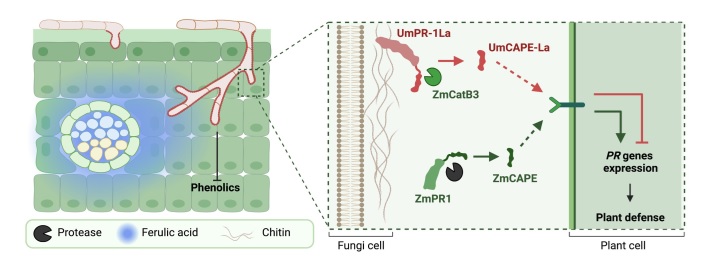[Dr. Lay-Sun Ma] The Battle between Pathogenic Fungi and Plant Hosts: Fungal Strategies_Part 1
POST:The Pathogenesis-related-1 (PR-1) family proteins are present in all kingdoms of life. During the co-evolutionary arms race, fungal pathogen PR-1 homologs (PR-1-like) evolved to counteract the action of plant PR-1, facilitating colonization. The research group, led by Dr. Lay-Sun Ma in collaboration with Drs Yin-Ru Chiang and Chuan-Chih Hsu, has discovered that the corn smut fungus Ustilago maydis employs PR-1La to sense host plant phenolic compounds, triggering a shift from vegetative to filamentous growth. This transition is a crucial initial step in the infection process for filamentous pathogenic fungi, as the PR-1La-shielded hyphae protect fungal cells and enhance their fitness, enabling survival in harsh environments. Additionally, the research group has unveiled that U. maydis hijacks maize protease CatB3 to release mimetic peptides, CAPE-like, from PR-1La. This action suppresses plant immunity and enhances the fungal virulence. Their work provides a mechanistic understanding of how fungal pathogens evolve PR-1 family proteins to perform dual novel virulence activities that contradict the defensive role of plant PR-1. Their research findings were published in Nature Communications in September 2023.
